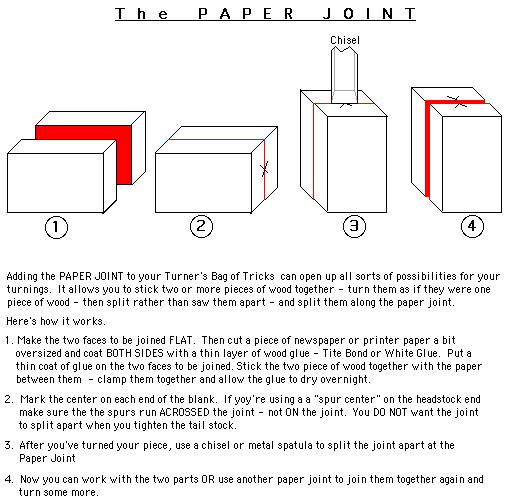Symetry About TWO AXES 90S TO EACH OTHER - with Two Halves TWISTED
Seeing a Peter Rand Femisphere for the first time pushed my "How In The Hell Did He . . . ?" button.
When I was given a copy of David Springett's book Woodturning Full Circle (ISBN 978-1-56523-406-2, $27.95 USD) for Christmas, my "How Do I Get Beyond Single Axis Symetry?" had a whole new area of turning to explore.
Look at this image. Look familiar? Now look at just the SHADOWS - there's a big hint as to the secret of streprtohedrons in those shadows.
Here's another hint.
PAPER JOINT.
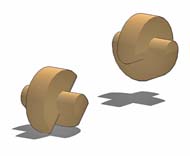
Turners normally think in terms of PROFILES - of single axis - symetrical pieces. Thinking in terms of SYMETRIC CROSS SECTIONS, turned on one axes, taken apart, parts rotated on another axis and glued back together - opens up whole new design possibilities. . .
So . . . I'm putting together a series of web pages on just some of what David Springett calls Streptohedrons (twisted polygons), of which Femisphere's are a part. I'm building virtual 3D models with How The Models Were Created step by step. You can download and play with them in Google's free SketchUp (Click Here to download a FREE version od SketchUp), or just view them from any angle, in 3D, with SketchUp Viewer (Click Here to download a FREE version of the SketchUp Viewer.).
If you've not played with SketchUp or SketchUp Viewer before CLICK HERE for a Quick Start Guide (close that window when you're done)
Here are the SketchUp models I've been playing wiith - Equilaticons, Isocons, Femispheres, Pentacons and Hexacons. Click on any of these illustrations to get to more about each one and from there, its SketchUp file that you can play with on your own. I'll be adding other applications of Springett's ideas as I continue studying them. If you have questions or suggestions for improving this stuff - please E-MAIL ME
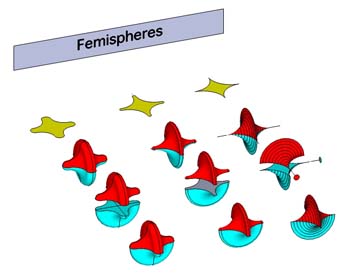
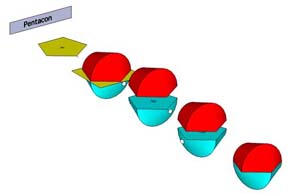
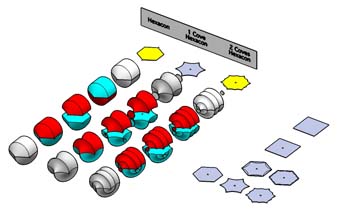
Now you may be wondering about how the original turning was cut in half . THAT could be pretty tricky to do. How do you keep something that wants to roll from rolling while you saw it in half?
The answer is
"You don't saw it in half - you SPLIT it in half - along a PAPER JOINT."
